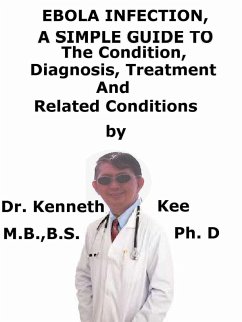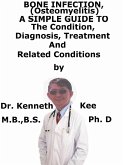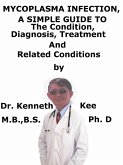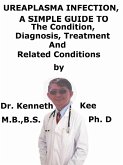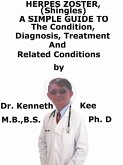There are many books all about Ebola being the next pandemic to hit the world with stories about the devastation it causes in Africa and around the world.
I am just giving just the simple medical facts about its deadly nature.
Ebola infection is a severe and often deadly hemorrhagic disease caused by a virus.
Viruses such as Ebola were present for millions of years, long before the appearance of man.
They can not live in worldwide society and they seldom come out of their region because they do not have the ability to easily colonize new host species.
Symptoms are fever, diarrhea, vomiting, bleeding, and often, death.
Ebola can happen in humans and other primates (gorillas, monkeys, and chimpanzees).
The Ebola outbreak in West Africa that began in March 2014 was the biggest in history.
Almost 40% of the people who had Ebola in this outbreak died.
WHO estimates Ebola should continue to spread for several months.
Generally, to survive, viruses must find a host cell and take it over.
The virus also duplicates itself so that it can be spread to other host cells.
In reaction to a virus infection, the human body produces antibodies.
Antibodies are the protein fighters of the immune system.
In less severe infections (like the flu), antibodies stop the virus from spreading and help clear it from the body.
The trouble with Ebola is that the virus multiplies so rapidly that it can easily overcome the body's immune response.
Causes
Ebola was first found in 1976 near the Ebola River in the Democratic Republic of the Congo.
Since then, several small outbreaks have happened in Africa.
The 2014 outbreak was the biggest.
The countries most involved in this outbreak were:
1. Guinea
2. Liberia
3. Sierra Leone
Ebola has been previously documented in:
1. Nigeria
2. Senegal
3. Spain
4. USA
5. Mali
6. United Kingdom
7. Italy
Most of these cases were because of people traveling from a country where Ebola was spreading.
A person who has Ebola cannot pass the disease until symptoms occur.
Ebola can only transmit between humans by direct contact with infected body fluids such as but not limited to urine, saliva, sweat, feces, vomit, breast milk, and semen.
The virus can go into the body through a break in the skin or through mucous membranes, such as the eyes, nose, and mouth.
Ebola can also transmit by contact with any surfaces, objects, and materials that have been in contact with body fluids from a sick person, such as:
1. Bedclothes and bedding
2. Clothing
3. Bandages
4. Needles and syringes
5. Medical equipment
Symptoms of infection with Ebola are intensive:
1. Internal and external bleeding,
2. Mucosal bleeding,
3. Vomiting and
4. Diarrhea, often accompanied by blood.
Often poorly perfused, the organs ultimately become necrotic
The diagnosis is hard because symptoms such as red eyes and itchy eyes are nonspecific.
1. Virus isolation by cell culture
2. Antibody-capture enzyme-linked immunosorbent assay (ELISA)
3. Serum neutralization test
4. Antigen-capture detection tests
5. Electron microscopy
6. Reverse transcriptase polymerase chain reaction (RT-PCR) assay
Treatment
There is no cure for Ebola and no vaccines that can prevent the disease.
Patients who recover from the disease do so due to the strength of their own immune system.
People with Ebola must be admitted for treatment in a hospital
1. Fluids given through a vein (IV)
2. Oxygen
3. Blood pressure treatment
4. Treatment for other infections
5. Blood transfusions
They can be quarantined so the disease cannot spread.
Serious cases are placed in the intensive care unit
Experimental treatments have been utilized
TABLE OF...
Dieser Download kann aus rechtlichen Gründen nur mit Rechnungsadresse in A, B, CY, CZ, D, DK, EW, E, FIN, F, GR, H, IRL, I, LT, L, LR, M, NL, PL, P, R, S, SLO, SK ausgeliefert werden.

